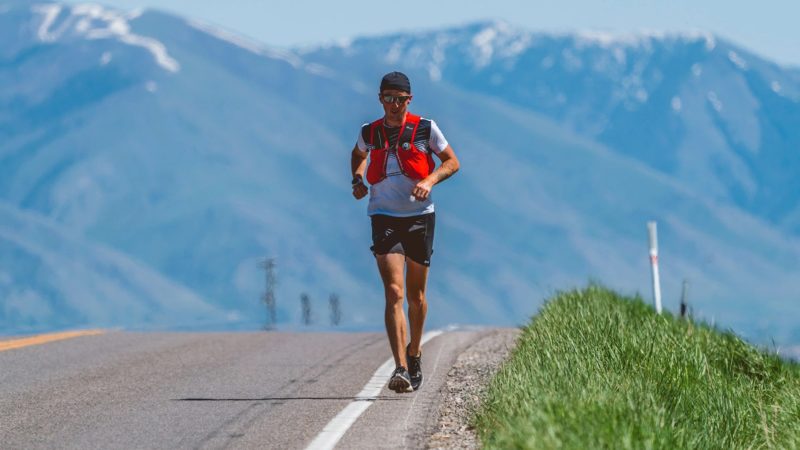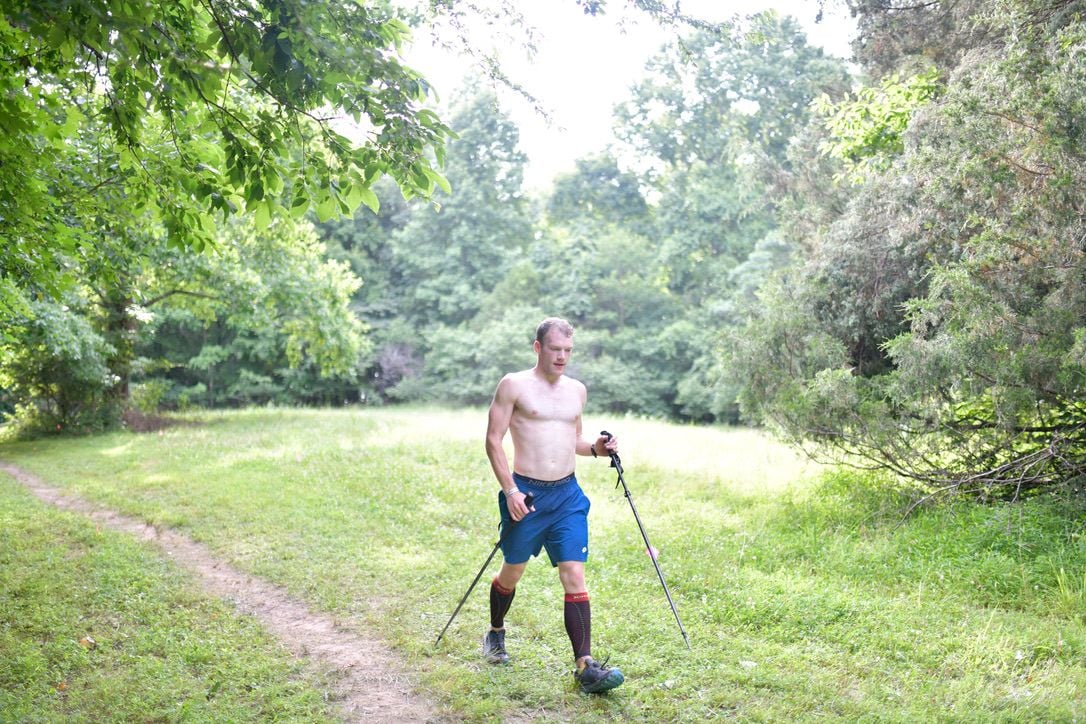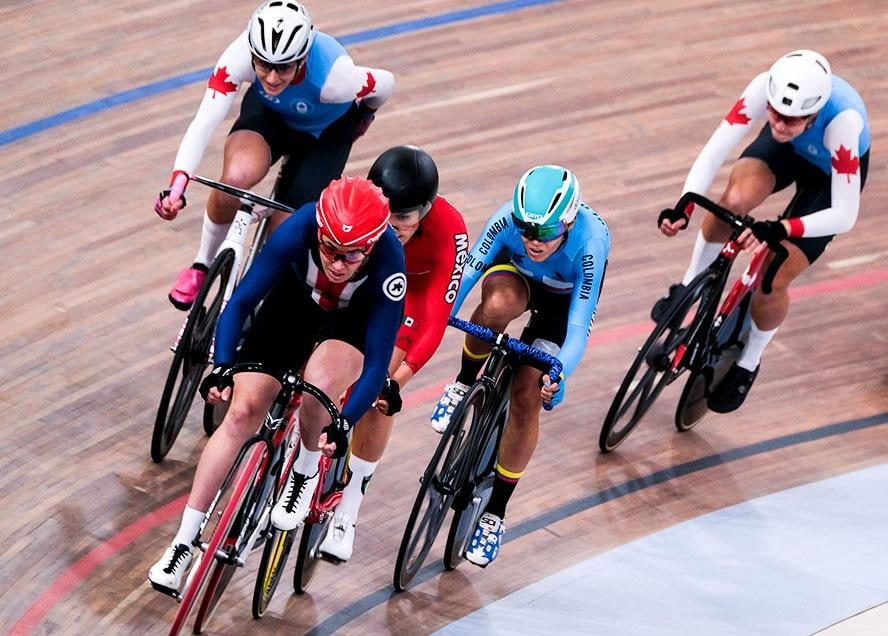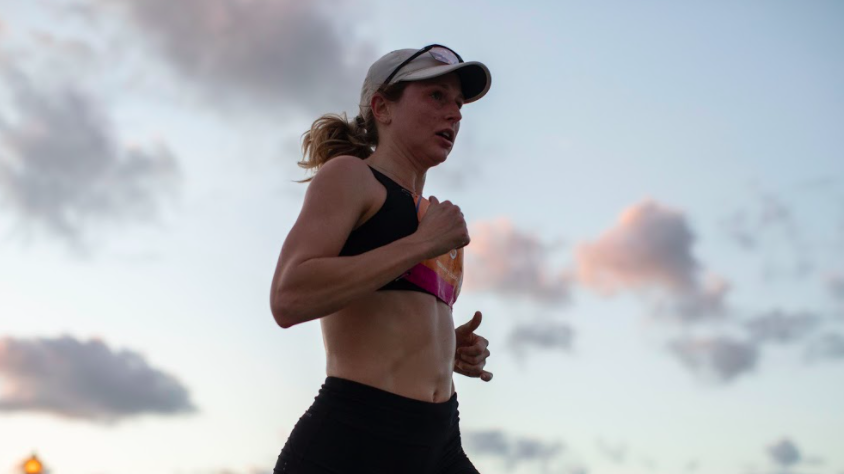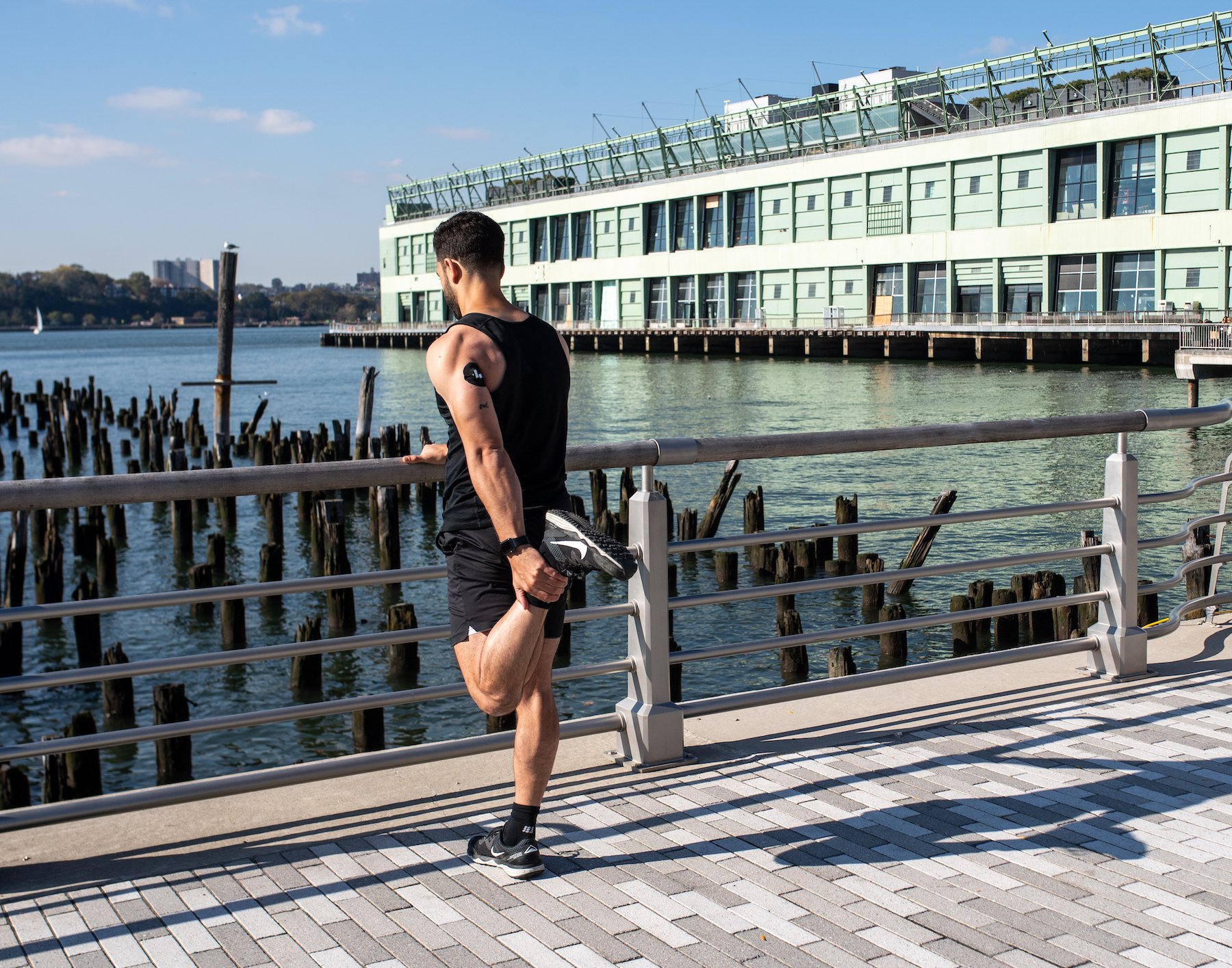Mike McKnight’s first ultra was a 28-miler in June 2013. Just one year later, he completed his first 100-mile race. Then, 200-miles. Then FKT (fastest known time) attempts on 500-mile trails.
His latest challenge? Running 100-miles and 24-hour races completely without fuel, the latter completed wearing a CGM. It’s his own N-of-1 trial—all just to see what would happen and if he could do it.
Mike started running in his early 20s to get in shape—and his passion was born. After a ski accident that broke his back and nearly left him paralyzed, he spent his recovery running a couple of miles per day. That turned into 10 to 15 miles per day, and then ultrarunning. “Being in that situation made me appreciate what I can do. I’m going to keep ultrarunning for as long as my body allows me to do it,” he says.
Mike ran the 24-hour course in Phoenix. His aim was to run as many miles as he could in that timeframe. He finished with 118 miles. Here, Mike talks about his fueling evolution as a runner, what his glucose levels looked like as he ran, and his goals for the future:
Q: What made you want to run a 24-hour race fasted?
A: I just wanted to collect data. I’ve done this before. A year ago was the first time I tried a zero-calorie 100 miler. I wanted to see if it was possible. But we didn’t collect any data. I went out there and ran and it went well. This time we took data on glucose, ketones, and stress hormones, as well as did a couple of blood draws to look at 15 other markers.
Q: Were you surprised by any of the data that you saw?
A: I didn’t know what to expect from the blood glucose, but it stayed fairly consistent for the entire run, which was cool. I was definitely expecting a crash at some point, but it never happened. My ketones were a little bit lower than I thought they would be, but the results make sense. When you’re exercising that far into a fast, you’re probably burning a high rate of ketones.
Q: How did you feel during that race?
A: During both zero-calorie races, I had pretty consistent energy. There was one difference. Usually, in a 100-mile race, I like to pick up the pace at miles 60 or 70 and finish strong. But I didn’t have that next gear racing fasted.
The other difference is the timing of the races. When I did the 100-miler I started at 6 a.m. and finished in 18.5 hours at 11:30 p.m. This time, in a 24-hour race, I didn’t sleep. When I hit midnight, I was foggy and falling asleep while running. It was difficult going through the night without having any calories to eat. Despite that challenge, I still didn’t have any cravings for food.
Q: How long have you been running fasted? Were you ever the traditional ‘drink Gatorade and carb-up with pasta before a run’ type of athlete?
A: I used to be pretty high-carb. This coming April will be my five-year anniversary of following a low-carb approach. I’m a bigger runner—6’ 1” and used to be 190/195 pounds before low-carb. The problem was that I needed more fuel than a typical 140-pound runner or else I would bonk. But I had a hard time digesting the number of calories I was trying to eat. I was either losing all of my energy because I wasn’t eating enough or I was puking all the time because I was trying to eat enough. I learned about Zach Bitter and Jeff Browning, two icons in the ultrarunning world who follow low-carb. After meeting them and talking about the science behind it, I tried it. I noticed a difference pretty immediately.
Q: What fuel do you normally eat on training runs?
A: I’ve trained myself to be efficient at burning both glucose and fat. So I do low-carb, but I’m not a keto runner. When I’m doing my runs, I’ll eat similar types of carbs that other runners eat—gels, fruit, bars, drinks that contain dextrose—but I’ll consume less than a typical high-carb athlete.
Typically, in ultramarathoning, runners will aim for 300 to 400 calories per hour. I eat 150 to 250 calories per hour. There are times at races when I’m trucking along, feeling good, and I look down at my watch and realize it’s been 2.5 hours since I last ate.
Q: What was your pre-race preparation? What were you eating?
A: I did 18/6- to 24-hour intermittent fasting windows every day for two months leading up to this. Diet-wise, I stuck to a pretty high keto carnivore-ish diet consisting of a lot of meat and fat.
Thirty-six hours before the race, I added a bit more carbs back in because I wanted to utilize both fuel storages (glucose and fat) to get me through the run without eating. The night before the race, I ate meat with red potatoes. For breakfast, it was a protein shake and an apple. Then, I ran.
Q: What did your glucose levels look like during your training?
A: I only had spikes in the morning when I did my runs. And those spikes still stayed low. The highest I ever got was 110 mg/dL. During the day after eating, I stayed in the low 70s fairly consistently. And at night while sleeping, my blood sugar dipped into the 50s quite often.
Q: Did you find out anything else from the CGM?
A: I did an experiment. Two days after finishing the zero-calorie 24-hour race, I indulged in a lot of crap food. Stuff like fried food from Panda Express. It was probably 300 to 400 grams of carbs for the whole meal. The highest my glucose got was 124 mg/dL. Within 30 minutes it was back down into the 80s.
Q: What’s the next challenge for you?
A: I don’t know if I’ll do another fasted race. I’m holding off deciding on that until I get my bloodwork back. If the results are negative, I have to figure out if I really am doing some damage to myself by training fasted. If it comes back positive, then I might try it again or see if we can get a group together for more data.
“This experiment has given me the confidence to fuel by feel. I no longer have to stick to a regimen of a certain number of calories per hour. If I feel an energy dip, then I will eat—my body is efficient at burning what I eat.”
What this experiment has done is that it gives me the confidence to fuel by feel. I know I no longer have to stick to a regimen of a certain number of calories per hour, which in the past has caused GI distress that slows me down. If I feel an energy dip, then I will eat. My body is efficient at burning what I eat now, so I can pop something in and have a good boost within a couple of minutes.
I ran 118 miles in 24 hours. I know I can do 130 miles while consuming calories, and I was hoping to run that number without calories. So, I fell 12 miles short.
As for upcoming races, I’ll be doing a 250-mile race in Arizona (that’s 55 to 70 hours of running) in May. In July, I’ll be at Badwater. (Editor’s note: Badwater is a 135-mile course that calls itself “the most demanding and extreme running race offered anywhere.”) And in October, I’m going after the Arizona Trail FKT, 800-miles from the top of the state to the bottom.
Mike and his coach discussing the run on a podcast:
